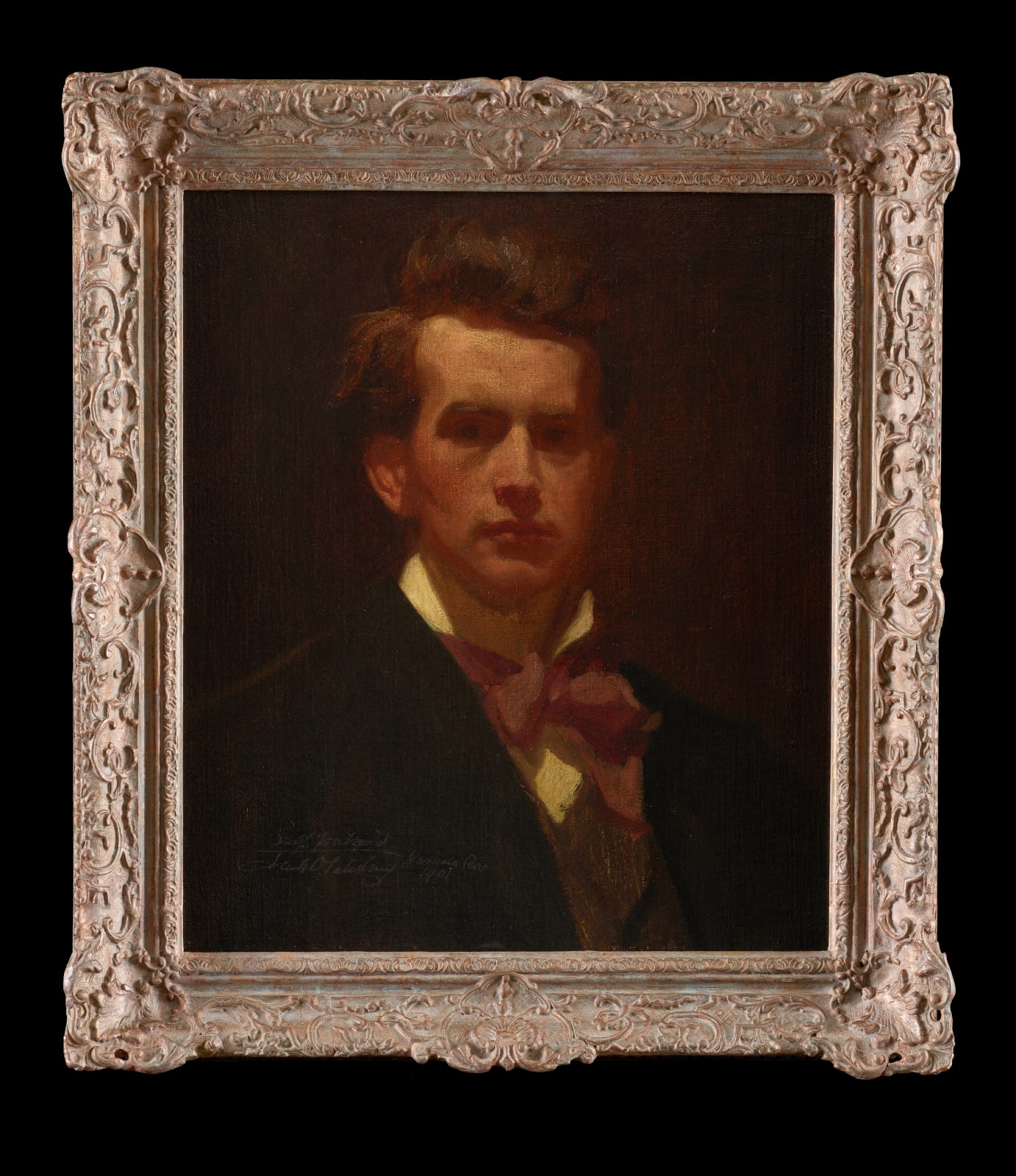
Frank O. Salisbury RA
Self-portrait of the artist as a young man, 1901
Oil on canvas
55 x 48cm (21.6 x 18.8 in)
Signed, inscribed Self Portrait, and dated 1901
Philip Mould & Co.
To view all current artworks for sale visit philipmould.com Frank O. Salisbury was an English artist known for his portraits and large canvases of historical and ceremonial events. Salisbury...
To view all current artworks for sale visit philipmould.com
Frank O. Salisbury was an English artist known for his portraits and large canvases of historical and ceremonial events. Salisbury would go on to become one of the greatest society artists of his generation creating portraits of some of Britain and America’s most significant people, including HM Queen Elizabeth II, Winston Churchill and Franklin D. Roosevelt. At the height of his career he was known as ‘Britain’s Painter Laureate’.
This self-portrait, painted in 1901 at the age of around 27, is a tender depiction of this eminent artist at the beginning of his career. Salisbury was born in Harpenden, Hertfordshire, and was mostly educated at home by his sister, Emmie. At fifteen he was apprenticed to his eldest brother James Salisbury, at his stained glass works in St Albans, who would soon arrange for him to attend Heatherley’s drawing academy in London three days a week. Salisbury’s illustrious career really began at the age of eighteen when he secured a five-year scholarship to the Royal Academy Schools. Here, he won several awards and exhibited over seventy works in the Royal Academy’s Summer Exhibitions between 1899 and 1943. Having married his wife Alice Maude in 1901 and moving in to their first home which included a studio, this self-portrait truly gives the sense of an artist on the cusp of success.
Painted in a similar style to his portraits of notable people, it demonstrates the importance of his years of study and the scholarship which allowed him to travel to Italy in 1896. Highly skilled in the traditional manner of academic art, Salisbury believed his work could help to serve as an antidote to what he saw as the Modernist ‘cult of ugliness’. Dapper and urbane, Salisbury was highly favoured in royal circles, his works and activities were closely monitored and commented in the press.
Frank O. Salisbury was an English artist known for his portraits and large canvases of historical and ceremonial events. Salisbury would go on to become one of the greatest society artists of his generation creating portraits of some of Britain and America’s most significant people, including HM Queen Elizabeth II, Winston Churchill and Franklin D. Roosevelt. At the height of his career he was known as ‘Britain’s Painter Laureate’.
This self-portrait, painted in 1901 at the age of around 27, is a tender depiction of this eminent artist at the beginning of his career. Salisbury was born in Harpenden, Hertfordshire, and was mostly educated at home by his sister, Emmie. At fifteen he was apprenticed to his eldest brother James Salisbury, at his stained glass works in St Albans, who would soon arrange for him to attend Heatherley’s drawing academy in London three days a week. Salisbury’s illustrious career really began at the age of eighteen when he secured a five-year scholarship to the Royal Academy Schools. Here, he won several awards and exhibited over seventy works in the Royal Academy’s Summer Exhibitions between 1899 and 1943. Having married his wife Alice Maude in 1901 and moving in to their first home which included a studio, this self-portrait truly gives the sense of an artist on the cusp of success.
Painted in a similar style to his portraits of notable people, it demonstrates the importance of his years of study and the scholarship which allowed him to travel to Italy in 1896. Highly skilled in the traditional manner of academic art, Salisbury believed his work could help to serve as an antidote to what he saw as the Modernist ‘cult of ugliness’. Dapper and urbane, Salisbury was highly favoured in royal circles, his works and activities were closely monitored and commented in the press.
Provenance
By direct descent from the artistBe the first to hear about our available artworks
* denotes required fields
We will process the personal data you have supplied in accordance with our privacy policy (available on request). You can unsubscribe or change your preferences at any time by clicking the link in our emails.